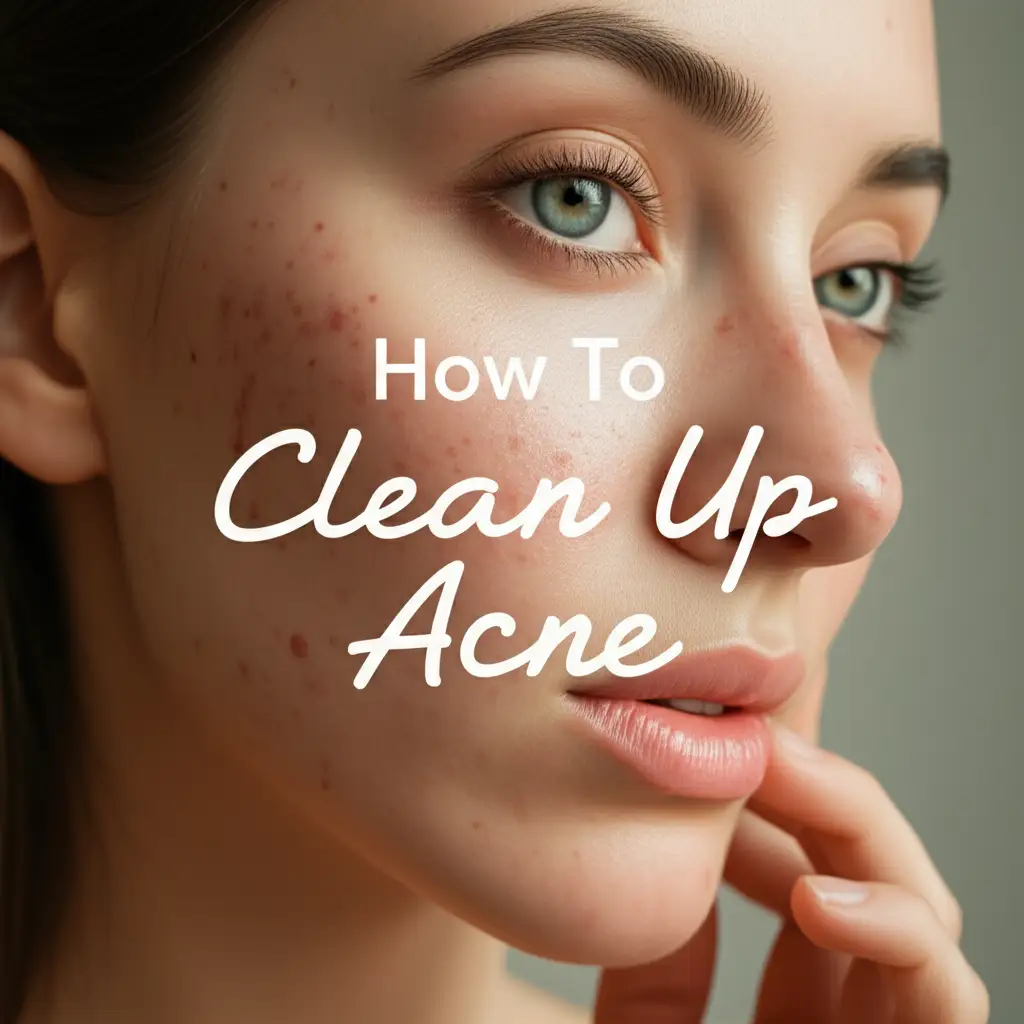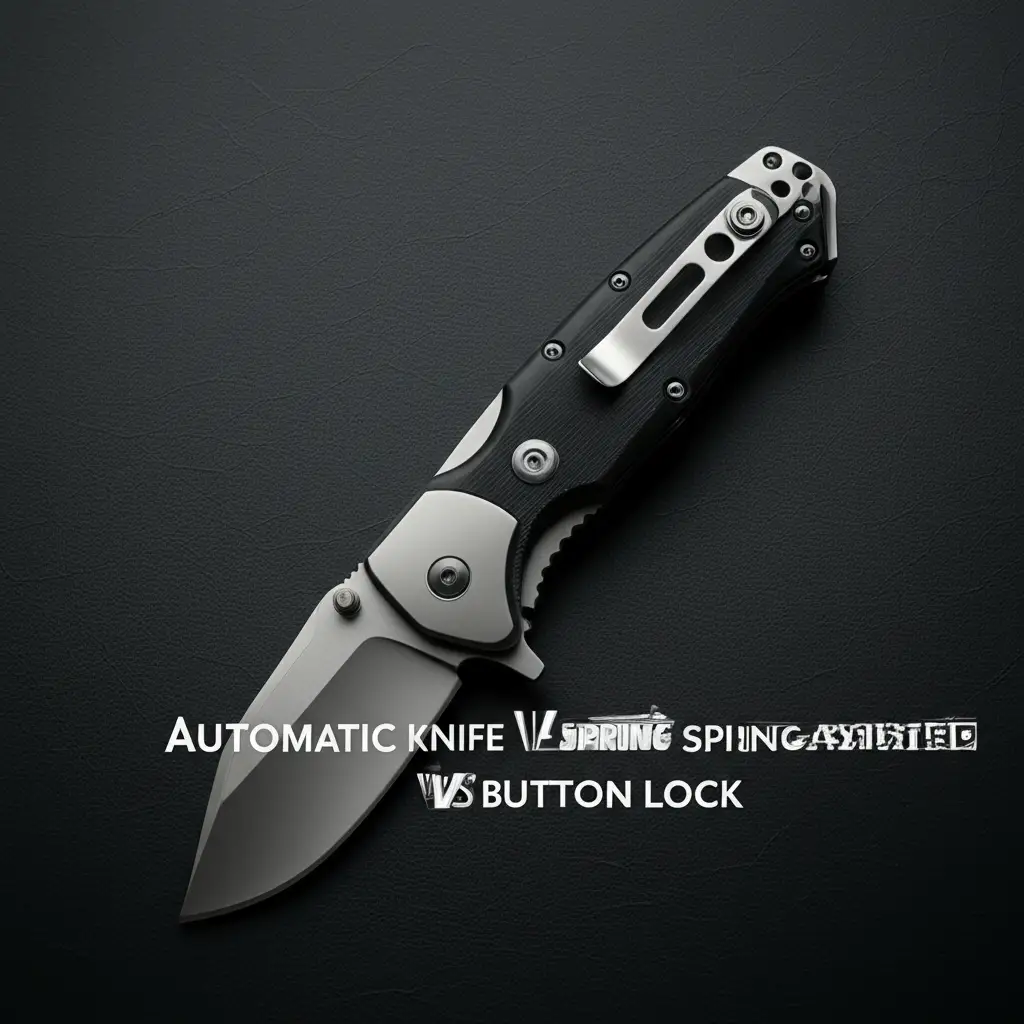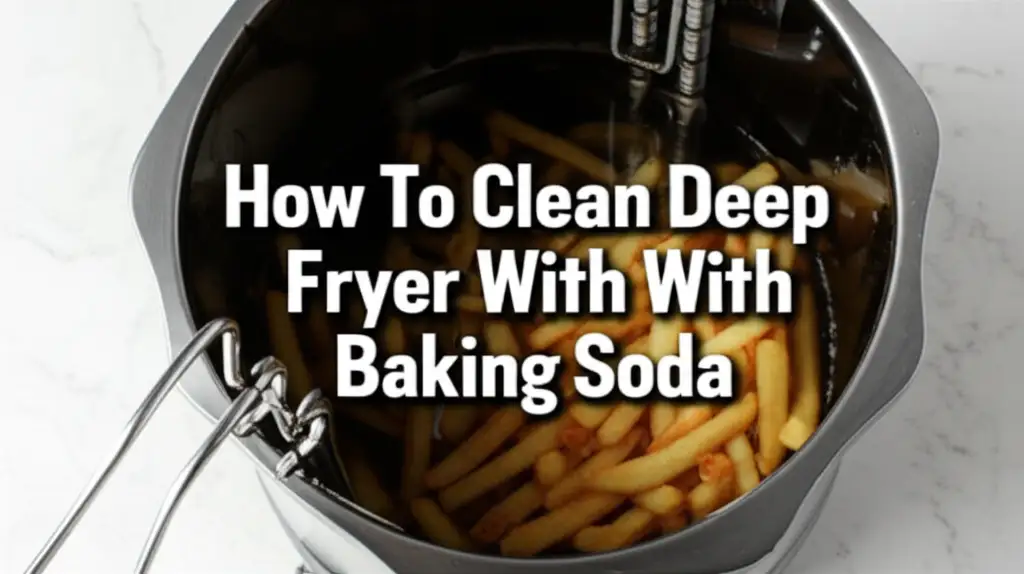· Elira Thomsen · Skincare · 14 min read
How To Clean Up Acne

How To Clean Up Acne: A Complete Guide
Acne can feel frustrating. It affects many people, from teenagers to adults. You might wonder how to get clear skin. I understand this struggle. This guide explains simple steps to clean up acne. We will cover skincare routines, gentle treatments, and helpful habits. You can achieve clearer skin with consistent effort.
Takeaway: Your Path to Clearer Skin
- Start with a gentle cleansing routine, twice a day.
- Use active ingredients like salicylic acid or benzoyl peroxide.
- Moisturize your skin regularly, even if it is oily.
- Protect your skin from the sun every day.
- Avoid picking or squeezing pimples.
- Make healthy lifestyle choices, including diet and stress management.
- Seek professional help for persistent or severe acne.
Cleaning up acne involves a consistent, gentle skincare routine combined with healthy lifestyle choices. Use mild cleansers, targeted treatments, and non-comedogenic products. Protect your skin daily from the sun. Avoid irritation, and be patient for results.
Understanding Acne: Causes and Types
Acne happens when hair follicles get blocked. Oil, dead skin cells, and bacteria clog these follicles. This creates pimples, blackheads, and whiteheads. Many factors cause acne. Hormones play a big role, especially during puberty. Stress can also make acne worse.
Certain foods may affect some people’s skin. Genetics also determine if you get acne. Understanding your specific acne type helps you find the right approach. It lets you choose the best products. Knowing the cause gives you control.
Different Kinds of Acne
Acne comes in various forms. Non-inflammatory acne includes blackheads and whiteheads. Blackheads are open clogged pores. Whiteheads are closed clogged pores. Inflammatory acne includes papules and pustules. Papules are small, red bumps. Pustules are red bumps with pus centers.
More severe forms include nodules and cysts. Nodules are hard, painful lumps under the skin. Cysts are large, painful, pus-filled lumps. Each type needs a specific approach. My goal is to help you identify your acne type. This guides your treatment choices effectively.
What Triggers Breakouts?
Several things can trigger acne breakouts. Hormonal changes are a common cause. Androgens, male hormones, can increase oil production. This leads to more clogged pores. Stress does not directly cause acne, but it can worsen existing conditions. Stress increases inflammation in the body.
Certain medications may also cause acne. Some cosmetics can clog pores. These are called comedogenic products. Picking or squeezing pimples spreads bacteria. This also creates more inflammation. My experience shows that identifying these triggers is crucial. Avoiding them helps clean up acne.
Building Your Daily Skincare Routine
A consistent skincare routine is important to clean up acne. It helps remove dirt and oil. It also delivers active ingredients to your skin. A good routine does not need many products. Simplicity often works best. The key is to be gentle and regular.
Your skin needs time to adjust to new products. Do not expect instant results. Patience is a strong ally here. I follow a simple morning and evening routine. This helps keep my skin clear. You can adapt it to your needs.
Morning Skincare Steps
Start your day with a gentle cleanse. Use a mild, non-foaming cleanser. Wash your face with lukewarm water. Pat your skin dry with a clean towel. Next, apply a light, oil-free moisturizer. Look for one labeled “non-comedogenic.” This means it will not clog pores.
Finish with sunscreen. Choose a broad-spectrum SPF 30 or higher. Sunscreen protects your skin from UV damage. Some acne medications make your skin more sensitive to the sun. This step is non-negotiable for skin health. It helps prevent dark spots and future damage.
Evening Skincare Steps
Cleanse your face again in the evening. Remove all makeup and dirt. This prevents clogged pores overnight. After cleansing, apply your acne treatment. This could be a topical cream or gel. Popular ingredients include salicylic acid or benzoyl peroxide. Start with a small amount.
Follow with your non-comedogenic moisturizer. This helps keep your skin hydrated. It also reduces dryness from acne treatments. My experience taught me that hydration is key. Even oily skin needs moisture. It supports your skin’s barrier function.
Effective Topical Acne Treatments
Topical treatments apply directly to the skin. They work to reduce acne symptoms. Many effective options are available over-the-counter. Others need a doctor’s prescription. Knowing the main ingredients helps you choose wisely. Always read product labels carefully.
I have found certain ingredients work well for various acne types. It often takes a few weeks to see results. Do not get discouraged if you do not see immediate change. Consistency is what makes these treatments effective. Give your skin time to respond.
Salicylic Acid Products
Salicylic acid is a beta-hydroxy acid (BHA). It deeply cleans pores. It helps exfoliate dead skin cells. This prevents pores from clogging. Salicylic acid works well for blackheads and whiteheads. It can also reduce mild inflammatory acne.
You can find it in cleansers, toners, and spot treatments. Start with a lower concentration. Increase as your skin tolerates it. I find it very helpful for my oily skin. It gently keeps my pores clear. This ingredient is a staple for many people.
Benzoyl Peroxide Solutions
Benzoyl peroxide kills acne-causing bacteria. It also helps shed dead skin cells. This ingredient is strong. It works for both inflammatory and non-inflammatory acne. You can find it in various strengths. Start with a 2.5% or 5% concentration.
Benzoyl peroxide can cause dryness and redness. It may also bleach fabrics. Apply it carefully to avoid staining clothes or towels. I recommend applying it at night. It helps calm angry pimples. Use a small amount to start.
Retinoids for Acne Control
Retinoids are vitamin A derivatives. They speed up cell turnover. This prevents clogged pores. They also reduce inflammation. Over-the-counter retinoids, like adapalene gel, are now available. Stronger retinoids require a prescription.
Start using retinoids slowly. Apply a small pea-sized amount a few times a week. Increase frequency as your skin adjusts. Retinoids can make your skin sensitive to the sun. Always use sunscreen daily when using retinoids. They are a powerful tool against acne.
Lifestyle Changes for Clearer Skin
Skincare products are only one part of the solution. Your lifestyle choices also affect your skin. What you eat, how you manage stress, and your daily habits all play a role. Making small changes can make a big difference. These changes support overall skin health.
I learned that caring for my body helps my skin. It is an inside-out approach. These habits are simple to adopt. They create a supportive environment for clear skin. You have more control than you think.
Diet and Acne Connection
Some studies suggest a link between diet and acne. High glycemic index foods may worsen acne for some people. These include sugary drinks and refined carbohydrates. Dairy products also seem to trigger breakouts in certain individuals. I found that reducing processed foods helps my skin.
Focus on a balanced diet. Eat plenty of fruits, vegetables, and whole grains. These foods provide essential vitamins and antioxidants. Omega-3 fatty acids, found in fish, may reduce inflammation. Listen to your body. Identify if specific foods affect your skin.
Stress Management Techniques
Stress can make acne worse. When you are stressed, your body produces more hormones. These hormones can increase oil production. Finding ways to manage stress is important. I use simple techniques to calm my mind. Deep breathing exercises are one effective method.
Regular physical activity helps reduce stress. Consider yoga or meditation. Getting enough sleep is also crucial. Aim for 7-9 hours per night. A rested body handles stress better. This leads to healthier skin.
Good Hygiene Habits
Cleanliness plays a role in managing acne. Wash your face twice daily, as mentioned. Change your pillowcases often, at least once a week. Dirt, oil, and bacteria build up on them. Clean your phone screen regularly. It touches your face often.
Avoid touching your face throughout the day. Your hands carry dirt and bacteria. Always wash your hands before applying skincare products. These small habits reduce bacterial spread. They help maintain a clean skin environment.
Preventing Acne Scars and Marks
Acne can leave behind unwanted marks. These include dark spots or actual scars. Preventing them is easier than treating them. Proper acne management is the first step. Do not pick or squeeze your pimples. This often leads to more inflammation and damage.
Sun protection is also vital. Sun exposure can darken post-acne marks. I always use sunscreen, even on cloudy days. Patience is key when dealing with marks. They fade over time with proper care.
Post-Inflammatory Hyperpigmentation (PIH)
PIH refers to dark spots left after a breakout heals. These spots are flat. They appear red, brown, or black. PIH happens when inflammation causes the skin to produce extra melanin. Sun exposure makes these spots darker.
Ingredients like vitamin C, niacinamide, and alpha arbutin can help fade PIH. Use these after your acne has cleared. They work by inhibiting melanin production. Consistency helps these marks fade faster. It takes weeks to months for significant improvement.
Atrophic Scars
Atrophic scars are depressions in the skin. They happen when acne destroys collagen. There are several types: icepick, boxcar, and rolling scars. Icepick scars are small, deep holes. Boxcar scars are wide, shallow depressions with sharp edges. Rolling scars have gentle, rolling depressions.
These scars are harder to treat at home. Topical creams may offer minimal improvement. Professional treatments are often needed. These include laser therapy, microneedling, or chemical peels. Consulting a dermatologist is the best approach for these.
Avoiding Picking and Squeezing
This is the most important rule for preventing scars. Picking or squeezing pimples pushes bacteria deeper into the skin. It causes more inflammation and damage. This increases the risk of infection and scarring. It also prolongs healing time.
It can be tempting, but resist the urge. Let pimples heal naturally. Use spot treatments to help them resolve faster. If a pimple is very painful or large, see a dermatologist. They can safely extract it if needed. Your skin will thank you for this patience.
When to See a Dermatologist
Sometimes, over-the-counter products are not enough. Severe or persistent acne needs professional help. A dermatologist can provide stronger treatments. They also offer procedures for acne scars. Do not hesitate to seek expert advice.
Early intervention can prevent severe scarring. A dermatologist can accurately diagnose your acne type. They can also create a personalized treatment plan. I have seen many people benefit from this step. It brings peace of mind and clearer skin.
Persistent Acne
If your acne does not improve after 6-8 weeks of consistent over-the-counter treatment, see a dermatologist. This means your current routine is not effective enough. They can prescribe stronger topical medications. These might include prescription-strength retinoids or antibiotics.
Oral medications may also be an option. These can include antibiotics or hormonal therapies. For severe cystic acne, isotretinoin (Accutane) might be prescribed. This medication is powerful and highly effective. It requires careful monitoring.
Scarring and Cysts
If you notice signs of scarring, seek help quickly. Early treatment of severe acne prevents permanent damage. Cysts and nodules are painful and often lead to scars. A dermatologist can drain them safely if needed. They can also inject corticosteroids to reduce inflammation.
For existing scars, dermatologists offer various in-office procedures. These include chemical peels, microdermabrasion, microneedling, and laser treatments. They can significantly improve scar appearance. Discuss the best options for your specific scars.
Sudden or Adult-Onset Acne
Adult acne can be frustrating. It appears suddenly in adulthood. This type of acne can be related to hormones or stress. If you experience new, sudden, or severe acne, consult a dermatologist. They can rule out underlying medical conditions.
They can also suggest targeted treatments. Adult acne often requires a different approach than teenage acne. It may involve hormonal treatments or specific skincare regimens. Do not assume you must live with it. Help is available.
Advanced Acne Treatments and Procedures
Beyond topical creams, several advanced treatments exist. These procedures are often performed by dermatologists. They target specific acne concerns. Some reduce active breakouts. Others improve the appearance of scars. These options are for more severe or resistant cases.
It is good to know what is available. Your dermatologist will recommend the best course. They assess your skin and acne type. These treatments offer hope for clearer skin. They can also boost your confidence.
Chemical Peels
Chemical peels use an acid solution. A dermatologist applies it to the skin. The peel causes the top layer of skin to exfoliate. This helps unplug pores. It also reduces inflammation. Chemical peels improve skin texture. They can also lighten post-acne marks.
Different strengths of peels exist. Mild peels offer subtle results with little downtime. Stronger peels provide more dramatic results. They require a longer recovery period. My experience shows these are great for overall skin renewal. They can make skin look fresh.
Microneedling Therapy
Microneedling uses a device with tiny needles. The needles create controlled micro-injuries in the skin. These small injuries stimulate collagen production. New collagen can fill in depressed acne scars. Microneedling also improves skin texture and tone.
This procedure typically needs multiple sessions. It can cause some redness and swelling afterward. Downtime is usually minimal. I find this treatment very effective for atrophic scars. It helps rebuild skin from within. It truly transforms the skin.
Laser and Light Therapies
Various laser and light therapies treat acne. Some lasers target acne-causing bacteria. Others reduce oil production. Pulsed dye lasers can reduce redness from inflamed acne. Fractional lasers improve the texture of acne scars. They stimulate collagen remodeling.
These treatments vary in intensity and downtime. Your dermatologist will choose the right laser. It depends on your acne type and skin concerns. Laser therapy is a powerful option for persistent acne and scarring. It gives precise results.
Oral Medications
For widespread or severe acne, oral medications are an option. Antibiotics reduce bacteria and inflammation. They are usually prescribed for a limited time. Hormonal therapies, like birth control pills, can help acne in women. They regulate hormone levels.
Isotretinoin, or Accutane, is a strong oral retinoid. It shrinks oil glands and reduces inflammation. It effectively clears severe cystic acne. This medication requires close monitoring by a dermatologist. It is reserved for serious cases.
Frequently Asked Questions
Can stress cause acne breakouts?
Stress itself does not directly cause acne. However, stress can worsen existing acne. It triggers hormonal changes in the body. These hormones can increase oil production. Managing stress helps reduce breakouts. Find healthy ways to cope with daily pressures.
How long does it take to clean up acne?
Cleaning up acne takes time. You might see some improvement in a few weeks. Significant results often appear after 2-3 months of consistent treatment. Be patient and stick to your routine. Severe acne may take longer to clear.
Is it okay to pop pimples?
No, it is not okay to pop pimples. Popping pimples pushes bacteria deeper into your skin. This leads to more inflammation, infection, and potential scarring. It can also spread acne. Let pimples heal naturally or use a spot treatment.
What foods should I avoid for clear skin?
Some people find certain foods trigger their acne. High-glycemic foods like sugary snacks and refined grains may be an issue. Dairy products can also be a trigger for some individuals. Pay attention to your diet. See if any foods consistently worsen your skin.
Do I need to moisturize oily skin?
Yes, you need to moisturize oily skin. Even oily skin can become dehydrated. Dehydration can make your skin produce more oil. Use a light, oil-free, non-comedogenic moisturizer. It keeps your skin barrier healthy. This prevents further irritation.
How can I prevent acne scars?
The best way to prevent acne scars is to treat active acne effectively. Avoid picking, squeezing, or scratching pimples. Always use sunscreen. Sun exposure can darken post-acne marks and make scars more noticeable. Seek professional help for severe acne early.
Conclusion
Cleaning up acne is a journey. It requires patience and consistent effort. We have covered key steps to help you achieve clearer skin. Remember to start with a gentle, daily skincare routine. Use effective topical treatments like salicylic acid or benzoyl peroxide. These ingredients work to reduce breakouts.
Adopt healthy lifestyle habits too. Your diet, stress levels, and hygiene choices all play a role. Avoid picking your skin. This prevents scars. If your acne persists or is severe, please see a dermatologist. They offer advanced treatments and expert guidance. You can have clearer, healthier skin. Start your path to confidence today.





